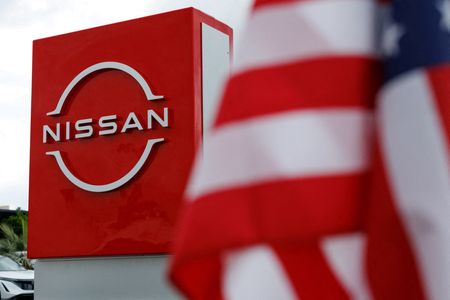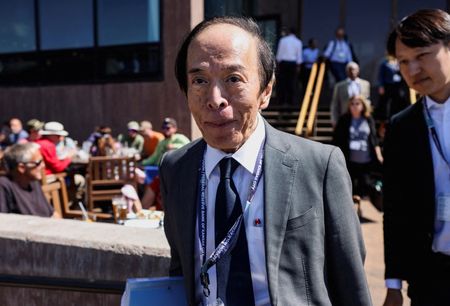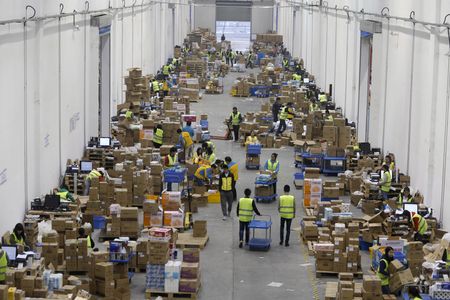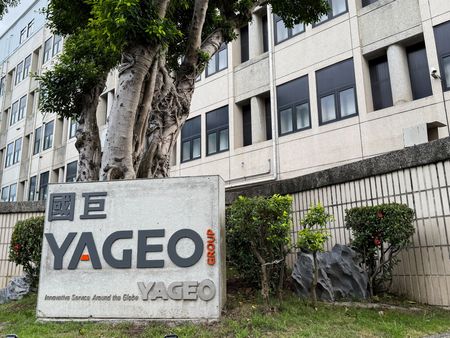By Daniel Leussink
TOKYO (Reuters) – Japanese automakers have long relied on the “dependable and affordable” appeal of their economy cars to drive U.S. sales, thanks in part to low-cost production in Mexico. Now, U.S. President Donald Trump is turning that business model on its head.
Trump has announced 25% tariffs on auto imports that are due to take effect on April 3. While the longer-term fallout remains unclear, Nissan, Honda, and other carmakers may need to raise sticker prices, industry experts say, including on economy models that target the most price-sensitive buyers.
It is another big headache particularly for troubled Nissan, given its reliance on both the U.S. market and Mexican production.
Last year, major Japanese carmakers exported almost 880,000 vehicles to the United States from Mexico, according to data from Mexico’s national statistics agency. While Toyota’s Tacoma pick-up was the most exported model, Nissan had the biggest share of any automaker, accounting for more than a third, with 327,000 vehicles, the data showed.
The Sentra was Nissan’s most exported model, with 180,000 of the compact sedans going across the border. The car starts at $21,590, according to Nissan’s website.
“The reason cars are made in Mexico is because costs are cheap, allowing automakers to produce economy vehicles there. A lot of those cars being made in Mexico are models where it is difficult to raise the prices, or if you do, you can only raise the price by a little,” said Koji Endo, head of equities research at SBI Securities.
In one scenario, Goldman Sachs sees tariff-related price hikes depressing Japanese automakers’ sales and operating profits in the current financial year.
Mazda could see the biggest hit with a 59% profit reduction, with Nissan next with an estimated 56% drop, according to Goldman estimates. Toyota, the world’s top-selling carmaker, would see a 6% decline and Honda would take an 8% hit.
That is especially bad news for Nissan, which is already flailing in the United States due to an ageing line-up and lack of hybrid models.
It cut its profit forecast three times in the financial year just ended and has had its debt downgraded to “junk”.
Nissan’s new chief executive, 46-year-old Ivan Espinosa, a Mexican national who was earlier its planning boss, has promised to dramatically cut the time it takes the company to develop new cars.
Slow decision-making at Nissan was one of the reasons why its merger talks with Honda collapsed in February, Reuters has previously reported.
Nissan declined to comment on its plans to deal with tariffs.
Toyota, which benefits from a diverse line-up that spans trucks and Lexus luxury vehicles, has said it plans to maintain “current operations for the time being” in regard to pricing and tariffs.
Honda declined to comment on Trump’s tariff announcement directly, saying it will consider minimising cross-border supplies within North America. It said it might need to consider restructuring its production network and supply chain if the U.S. keeps tariffs in place over the long term.
The automaker plans to make its next-generation Civic hybrid in the U.S. state of Indiana, instead of Mexico, to avoid potential tariffs, people familiar with its plans told Reuters last month.
TRADING DOWN
James Hong, head of mobility research at Macquarie, reckons tariffs, if fully passed on to consumers, would mean in practice an increase of 20% because duties are calculated on the vehicle transfer price, rather than the retail price.
Still, 20% is a considerable sticker shock for Sentra buyers already grappling with inflation.
Most automakers are unable to shift production from Mexico to the United States either, because they now lack spare production capacity in the U.S., Hong said.
Instead, it is more likely that consumers will trade down, including to the used car market, which could also see price increases.
Around 27% of Nissan’s U.S. sales originate from Mexico, compared to some 13% at Honda and 8% at Toyota, according to S&P Global Mobility.
Nissan has been producing cars in Mexico since 1966, when it opened its first manufacturing plant outside Japan. Toyota, Honda and Mazda later followed. Nissan’s first U.S. plant opened in Smyrna, Tennessee, in 1983.
Global automakers have helped Mexico become the top exporter to the United States with $476 billion worth of goods shipped in 2023, according to IMF data. In 1966, the year Nissan set up shop, Mexico was at No.6 with $824 million in exports, the data showed.
SAVED BY THE YEN
Japan’s weak yen currency may prove to be, yet again, a saving grace for the automakers, increasing profits when earnings from abroad are brought home.
Given that Japanese automakers tend to plan in multi-year cycles, cars imported into the United States are being sold at prices that, in yen terms, are considerably higher than three years ago, when they likely set the parameters for the current cycle, said Seiji Sugiura, an analyst at Tokai Tokyo Intelligence Laboratory.
The yen was trading at around 150 to the dollar on Wednesday, compared with 122 three years ago.
“If this current level of around 150 yen to the dollar continues for a time, they can still make a profit even with 25% tariffs,” Sugiura said.
Automakers may also choose to raise prices of some models rather than across the board, said Ken Miyao, CEO of research company Carnorama Japan.
Nissan has drawn up several scenarios that it can use once tariff policies are clear, CEO Espinosa said last week.
Given Nissan’s finances, it may be the first to act, Miyao said. “Nissan may not have a choice and may have to raise prices first.”
(Reporting by Daniel Leussink; additional reporting by Kentaro Okasaka and Maki Shiraki in Tokyo, Pasit Kongkunakornkul in Bangkok; writing by David Dolan; editing by Tomasz Janowski)











